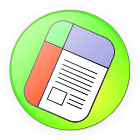The benefits of Web Accessibility
Four key-points summarize the benefits that Web Accessibility brings to users, companies, organizations and also to society as a whole:
Commercial, Technical, Legal and Ethical.
Commercial: Accessibility increases the website use and it is cost effective
Increases the market share and audience reach
Web accessibility can make it easier for people to find a website, access it, and use it successfully, thus resulting in increased audience (more users) and increased effectiveness (more use).
... for example, commercial companies can get more sales, educational institutions can get more students, and non-profit organizations can get more funding by demonstrating successful outreach and dissemination.
Financial Factors in Developing a Web Accessibility Business Case for Your Organization, W3C, available at: https://www.w3.org/WAI/bcase/fin.html
When contents and services offered by the website of a company or organization are planned to be accessible they will be available to a wider range of users. Not only to users with disabilities, but also to many other users with special needs or who are using special hardware or software. Some example could be the elderly who may have sight problems, or users using old machines or obsolete technology or people using smartphones.
Having an accessible website means giving the opportunity to those people to access the content or the services offered, thus, it means also increasing the number of potential customers and audience.
Increases findability with search engine optimization (SEO)
Accessibility techniques increase the findability of web pages by exposing content to search engines, both internally (within a website) and externally (across the World Wide Web).
Financial Factors in Developing a Web Accessibility Business Case for Your Organization, W3C, available at: https://www.w3.org/WAI/bcase/fin.html
Most of the search engines are only able to process text and the way it is structured. If a website follows the accessible guidelines and, for example, gives alternative text for images and multimedia and the content is marked properly, it will be more likely to be listed favourably by search engines. In fact an accessible website can be called "text" or "content oriented" and it aims to produce quality and well structured content. This aspect is very relevant to search engines.
Increase the positive image of a company or organization
An organization's efforts in Web Accessibility are an opportunity to positively increase its public image, which can increase website use.
Direct costs saving
- Decreases personnel costs for maintaining the site when accessibility reduces site maintenance
- Decreases the amount of server capacity needed and saves on additional server costs when accessibility reduces server load
- Decreases the need for creating multiple versions of a site for different devices when accessibility enables content to work on different devices
- Decreases the cost of upgrading for new technologies when accessibility helps take advantage of advanced web technologies and is prepared for future web technologies
Financial Factors in Developing a Web Accessibility Business Case for Your Organization, W3C, available at: https://www.w3.org/WAI/bcase/fin.html
Further information about this topic can be found at: https://www.w3.org/WAI/bcase/fin.html
Technical: produces a high quality and highly flexible website
Implementing Web accessibility solutions often result in improved technical performance under several factors. Some of the most important are:
- Reduces site development and maintenance time;
- Reduces bandwidth use and server load;
- Enables Content on Different Configurations, such as mobile devices, screen readers, different operating systems and browsers;
- ‘Future proofed’, that means being prepared for implementing future technologies;
- Cross-browser compatibility.
All this can be realized by following certain developing techniques, such as:
- Separating content from representation: This can be made by using appropriate mark-up language for content and CSS style-sheets to style the page;
- Including alternative text for images and transcripts for multimedia files;
- defining several style-sheets for different devices;
Further information about this topic can be found at: https://www.w3.org/WAI/bcase/tech.html
Legal: conformances with government requirements
In some countries one organization might be required by explicit government regulations to make its websites accessible.
You can visit the following page that lists, country by country, the legislation or policies. Note that the page is in continual development: https://www.w3.org/WAI/Policy/
Further information about this topic can be found at: https://www.w3.org/WAI/bcase/pol.html
Ethical: Accessibility contributes to build a better society
It is essential that the Web be accessible in order to provide equal access and equal opportunity to people with disabilities. An accessible Web can also help people with disabilities more actively participate in society.
Introduction to Web Accessibility, W3C, available at: https://www.w3.org/WAI/intro/accessibility.php
... the impact of disability is radically changed on the Web because the Web removes barriers to communication and interaction that many people face in the physical world. However, when websites, web technologies, or web tools are badly designed, they can create barriers that exclude people from using the Web.
Accessibility, W3C, available at: https://www.w3.org/standards/webdesign/accessibility
Further information about this topic can be found at: https://www.w3.org/WAI/bcase/soc.html

